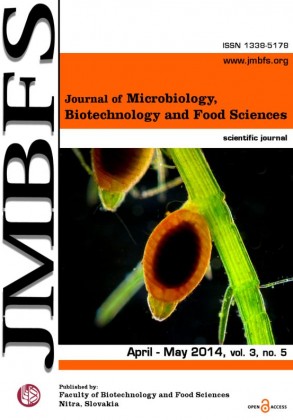BIOCONCENTRATION OF HEAVY METALS IN VERMICOMPOSTING EARTHWORMS (Eisenia fetida, Perionyx excavatus and Lampito mauritii) IN NEPAL
Keywords:
Bioconcentration factor, Eisenia fetida, heavy metals, Lampito mauritii, Perionyx excavates, vermicompostAbstract
Vermicomposting of organic waste can play an important part during the waste management process in larger cities such as Kathmandu where 70% of the waste generated is organic. In this study, the possibility of heavy metal (Pb, Cd, Cu and Cr) bioaccumulation by three different species of earthworms Eisenia fetida, Lampito mauritii and Perionyx excavatus in domestic waste vermicompost was investigated. Quantification of heavy metals by Atomic Absorption Spectroscopy(AAS) in final vermicompost showed a significant reduction in concentration of metals, Pb (11.4-26.0%), Cd (48-61%), Cu (4.9- 29.01%) and Cr (18.90-33.60%) at the end. Bioaccumulation of heavy metal in the composting earthworms was also recorded. Comparison of the three groups of earthworms showed that the bioaccumulation of Pb, Cu and Cr was greater for P. excavatus whereas E. fetida was the most reluctant. Heavy metal content in the vermicompost was within the limit of USEPA for Biosolids and the compost could be used for the agriculture purpose.Downloads
Download data is not yet available.
Downloads
Published
2014-04-01
How to Cite
Panday, R., Bahadur Basnet, B., Shekhar Bhatt, P., & Shova Tamrakar, A. (2014). BIOCONCENTRATION OF HEAVY METALS IN VERMICOMPOSTING EARTHWORMS (Eisenia fetida, Perionyx excavatus and Lampito mauritii) IN NEPAL. Journal of Microbiology, Biotechnology and Food Sciences, 3(5), 416–418. Retrieved from https://office2.jmbfs.org/index.php/JMBFS/article/view/7007
Issue
Section
Biotechnology
License
Copyright (c) 2014 Raju Panday, Buddha Bahadur Basnet, Padam Shekhar Bhatt, Anand Shova Tamrakar

This work is licensed under a Creative Commons Attribution 4.0 International License.
All papers published in the Journal of Microbiology, Biotechnology and Food Sciences are published under a CC-BY licence (CC-BY 4.0). Published materials can be shared (copy and redistribute the material in any medium or format) and adapted (remix, transform, and build upon the material for any purpose, even commercially) with specifying the author(s).

